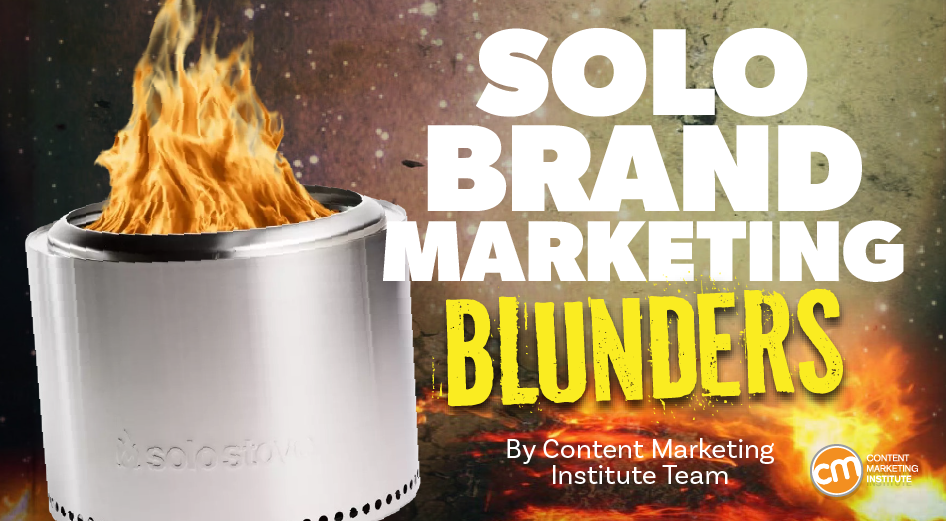Many companies operate like the Wild West for content requests, brainstorming, and creation. They lack any process to research, ideate, and create. Any well-regulated workflow process only enters the scene when producing digital assets.
Yet business executives want marketing and content teams to use generative AI to enhance that creation process – yes, the process that doesn’t exist. The main problem isn’t “Explain how to make this process more efficient.” It is “Explain the benefit of using AI to solve a problem that’s not understood.”
Executives want #marketing teams to use #genAI to enhance the content creation process. Yet, for many, the process doesn’t exist, says @Robert_Rose via @CMIContent. Click To Tweet
Spoiler alert: Better prompts are not the answer.
Know what’s really going on
About three months ago, I consulted with a large, fast-growing media and technology company seeking to integrate generative AI into its content marketing (e.g., thought leadership) processes.
I did an audit of the “occurrent processes” – how the stuff really gets done. With this client, as in many businesses, no documented process existed for the content creation life cycle. Yet somehow, they researched, created, and edited the content sent to the design team to produce what everybody wanted – the digital assets for various channels.
Mapping these occurrent processes documents the workflow for the content’s life cycle. From there, the improvements fall into two categories. The first involves the business’ application of more standardized approaches to make content creation more efficient, effective, or measurable.
The second improvement step – specific to generative AI – is a gap analysis to identify where existing AI toolsets could be applied to make team members more efficient, expand their capabilities, or change the nature of the content collaboration.
Conduct a gap analysis to identify where #genAI tools can make teams more efficient or expand their capabilities, says @Robert_Rose via @CMIContent. Click To Tweet
Now, the business has options about what, where, and when a new generative AI tool might be worth piloting. Should it maximize the team’s strengths or minimize its weaknesses?
Will AI make your marketing and content stronger or cover for weaknesses?
The long prevailing theory in business says teams achieve more success by building on their strengths rather than repairing their weaknesses. Tom Rath and Barry Conchie explore this idea in Strengths Based Leadership based on Gallup’s 30-year research project.
To be clear, the theory doesn’t say you should ignore weaknesses. It suggests you invest in your talents and minimize the effect of your shortcomings.
But here’s the challenge. Generative AI in content and marketing is so new, disruptive, and chaotic that few people and even fewer marketing teams can truly point to it as a differentiating strength.
I find clients who do possess this strength have a set of well-understood creative content management processes. Their teams are better equipped to identify the gaps where new generative AI technology may have a strong role.
But even then, the answers aren’t clear. Should you use AI to double down on your strengths with advanced training to scale up your research capabilities? Or should you shore up your weaknesses with new technology and training and supplement the writing so the content team can produce twice as much stuff? Should you cut the team in half or add new responsibilities to the existing team?
Spoiler alert: There are no easy answers. You outline a roadmap as best you can.
Weaknesses are sometimes over-indexed strengths
Some experts argue focusing solely on strengths has its challenges. A few years ago, The Harvard Business Review featured a podcast and article suggesting “so many weaknesses are overdeveloped strengths.”
For example, amplifying the strengths of a politically astute team leader who makes things happen can lead to a manipulative boss. Or leaning too far into the awesome creativity of your design team can lead to a dynamic where they are considered idiosyncratic or out of touch with business realities.
You’ve seen this phenomenon play out over the last 20 years with most new technologies – including generative AI. For example, suppose you overplay the perceived strength of the team’s writing. In that case, you tend to be less willing to use generative AI for more derivative content writing, such as abstracts, summaries, or other straightforward content.
If you overplay the strength of the team’s writing, you’re less willing to use #genAI for more derivative content writing, says @Robert_Rose via @CMIContent. Click To Tweet
Every answer is wrong, but some are useful
Statistician George Box once said, “All models are wrong, but some are useful.” I remember that quote when integrating new, disruptive technology, such as generative AI, into the creative workflow. You just don’t know enough about how things will shake out with the technology to be 100% certain of any outcome.
However, if you’re self-aware about your and your team’s strengths and weaknesses, you can decide what to focus on. If you can establish a standard for what’s really going on now – how work is accomplished – it becomes easier (not easy) to make decisions about using generative AI to maximize your strengths or minimize your weaknesses.
Let me give another example. We worked with a client earlier this year who has been growing and molding their content team for a few years. They possess an acute awareness of the team’s strengths and weaknesses as it pertains to their clear, documented, and understood content creation processes. They know when they’re breaking the rules. More importantly, the team leader has created transparency and awareness of their ongoing balance throughout the business. She communicates where her team is focused frequently and clearly to other siloed parts of the business.
In that company, the content team is seen as strong and focused on their strengths of high-quality thought leadership, creativity, and design capability. As they looked at integrating generative AI into their process, they didn’t have to fight internal opinions or make a business case about whether they should replace the content writers with AI for automated sales emails, landing page copy, or even blog post.
Instead, this team could focus on integrating AI to minimize the weaknesses they already recognized. They integrated generative AI into their editorial strategy as a research assistant to determine the topics not covered but should be, the overly saturated topics, and the popular topics that would benefit from fresh angles. By doing so, they sharpened their content focus and got even better.
The usefulness of any strengths-based model – or in performing a skills audit – for a new disruptive way of performance lies in helping you make informed decisions about constantly aligning your team to the business needs.
Over time, if you can keep this self-awareness, your (or your team’s) weaknesses can become your greatest strength – and you’ll end up being right more than you’re wrong.
And, as with adding any new capability, that’s the best we can hope for.
It’s your story. Tell it well.
HANDPICKED RELATED CONTENT:
Cover image by Joseph Kalinowski/Content Marketing Institute






